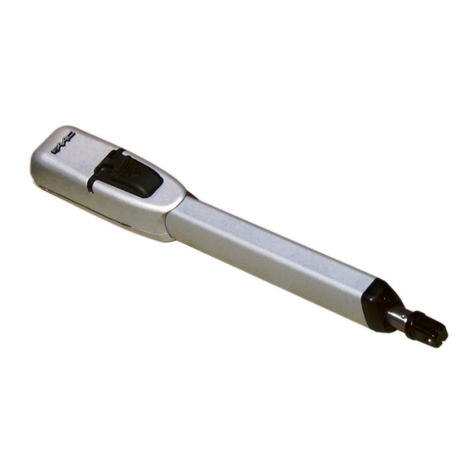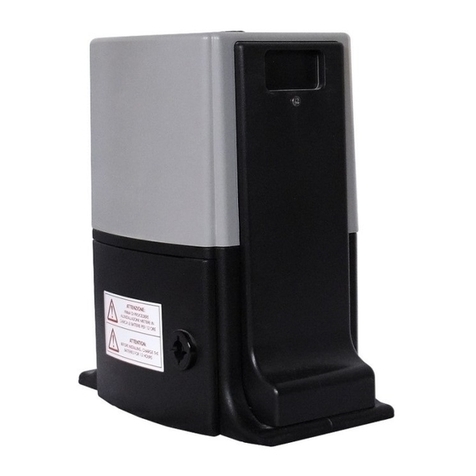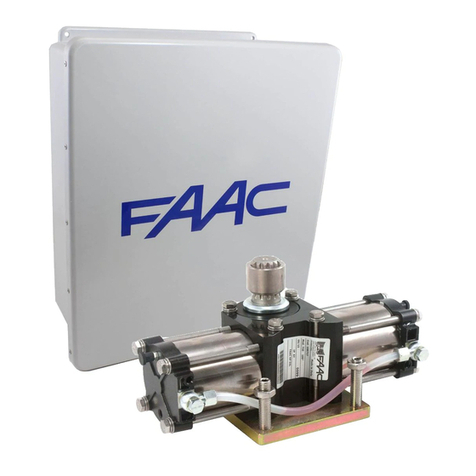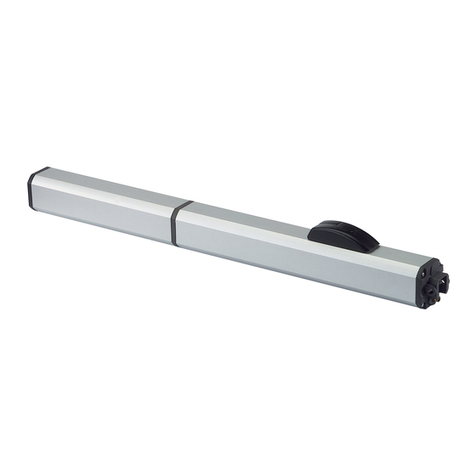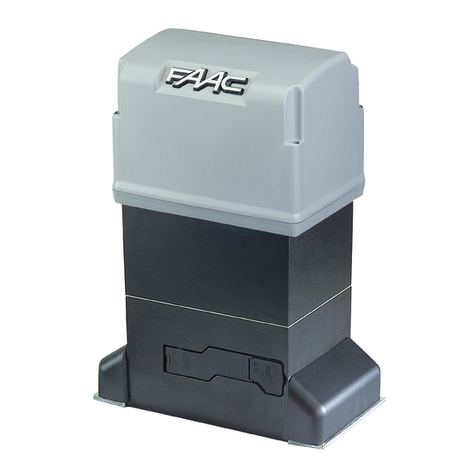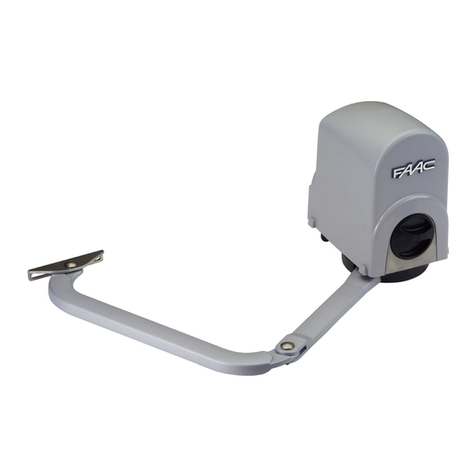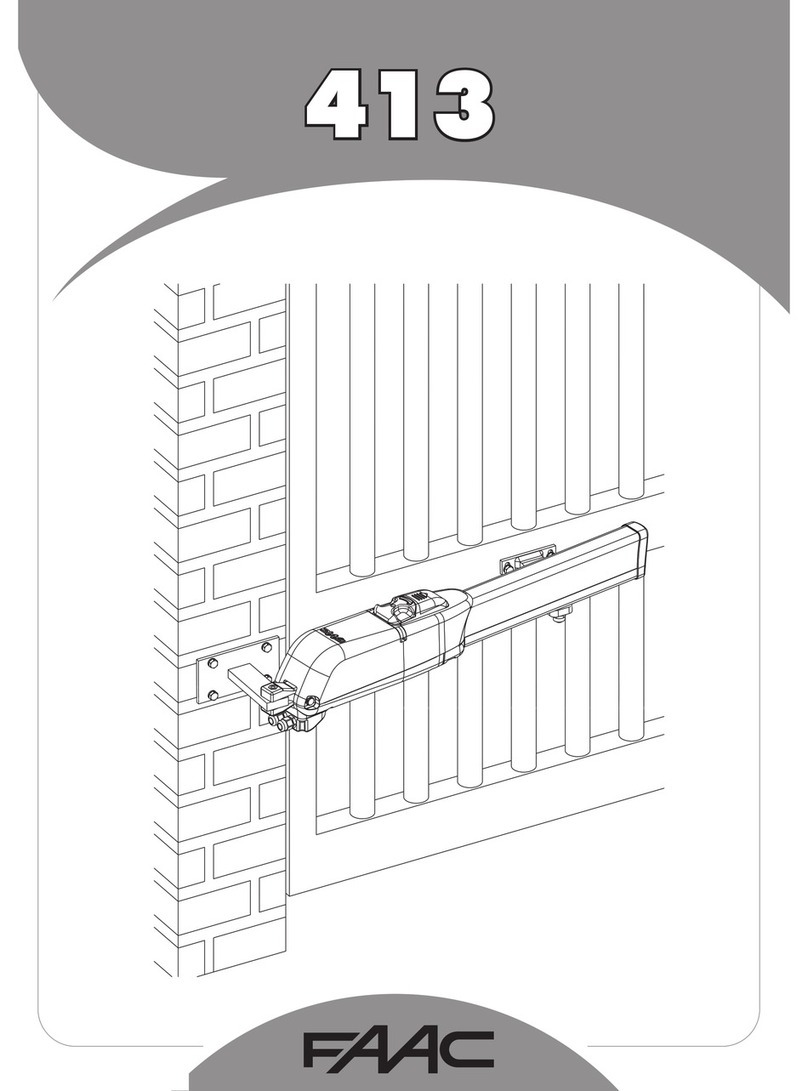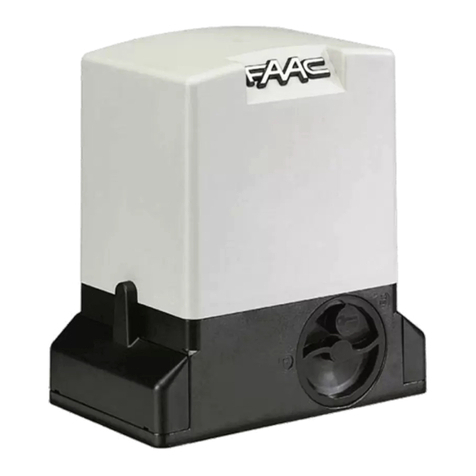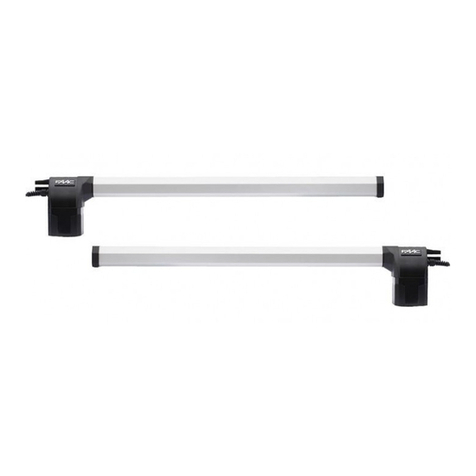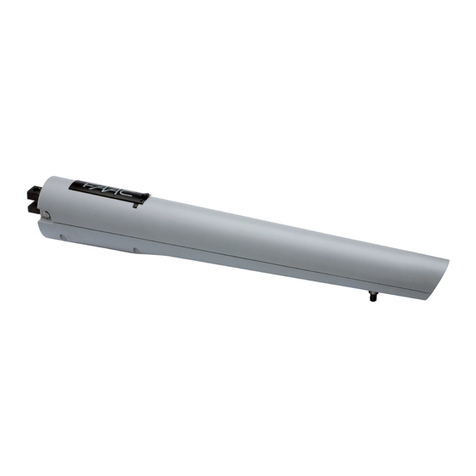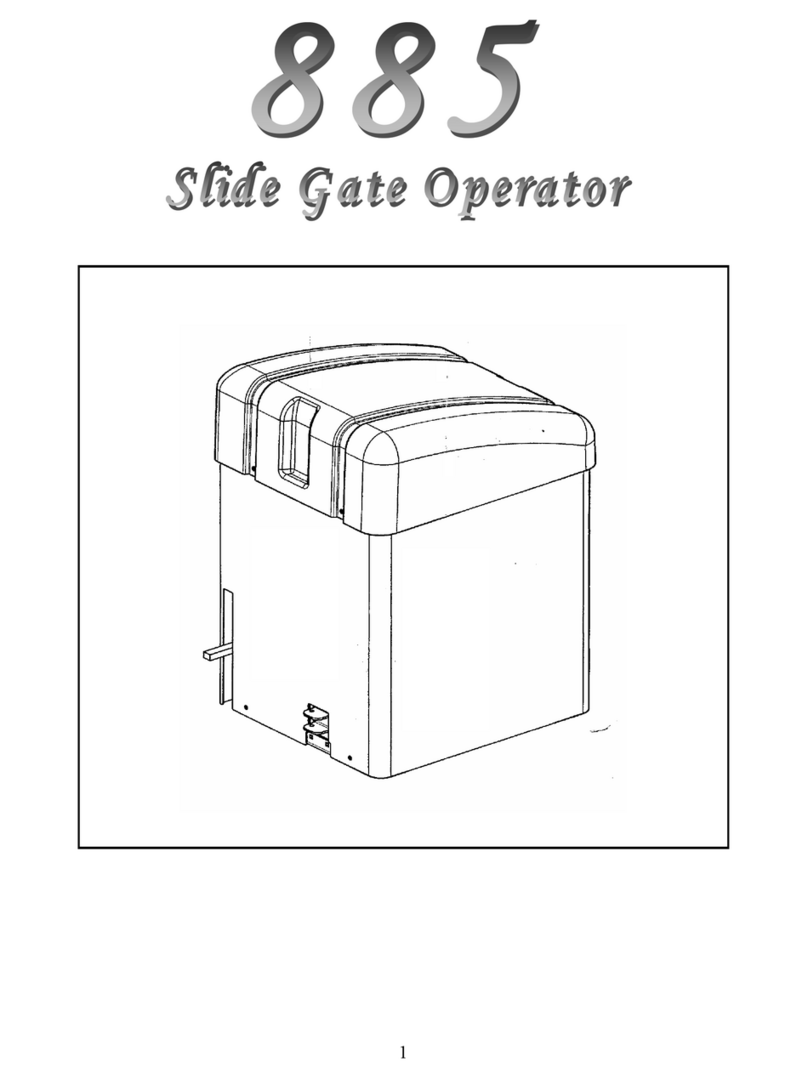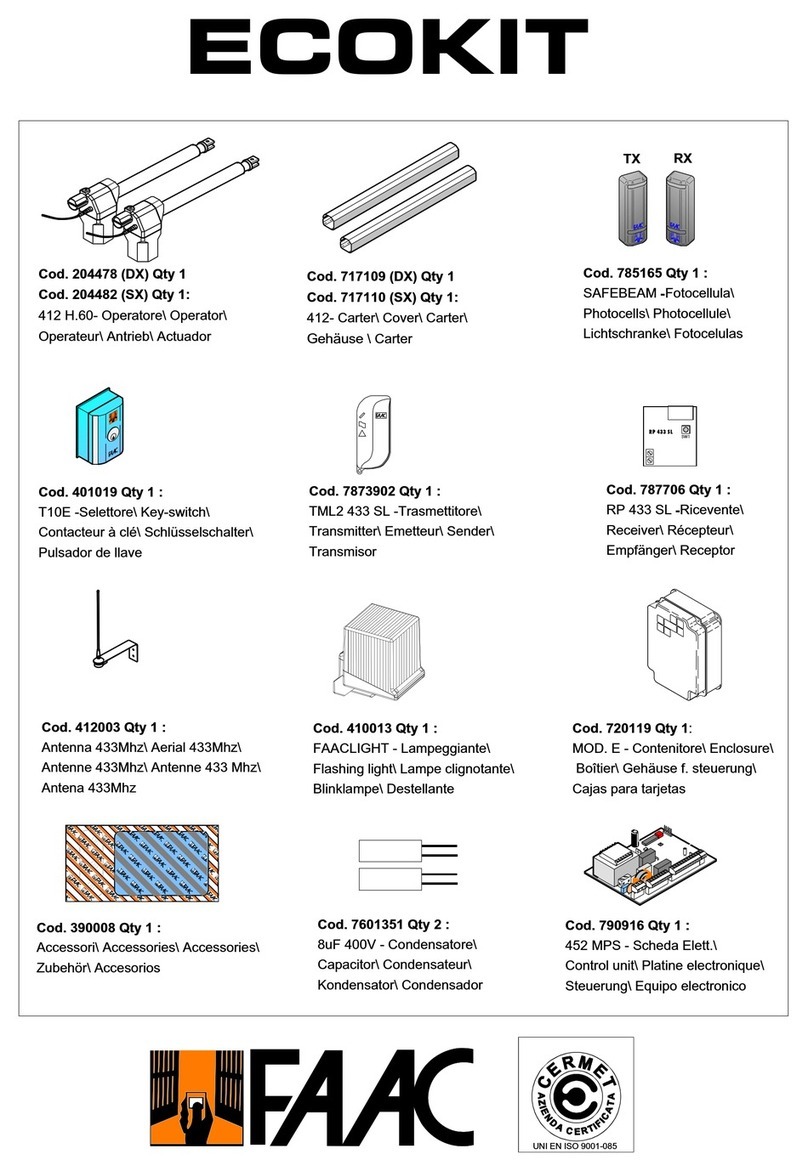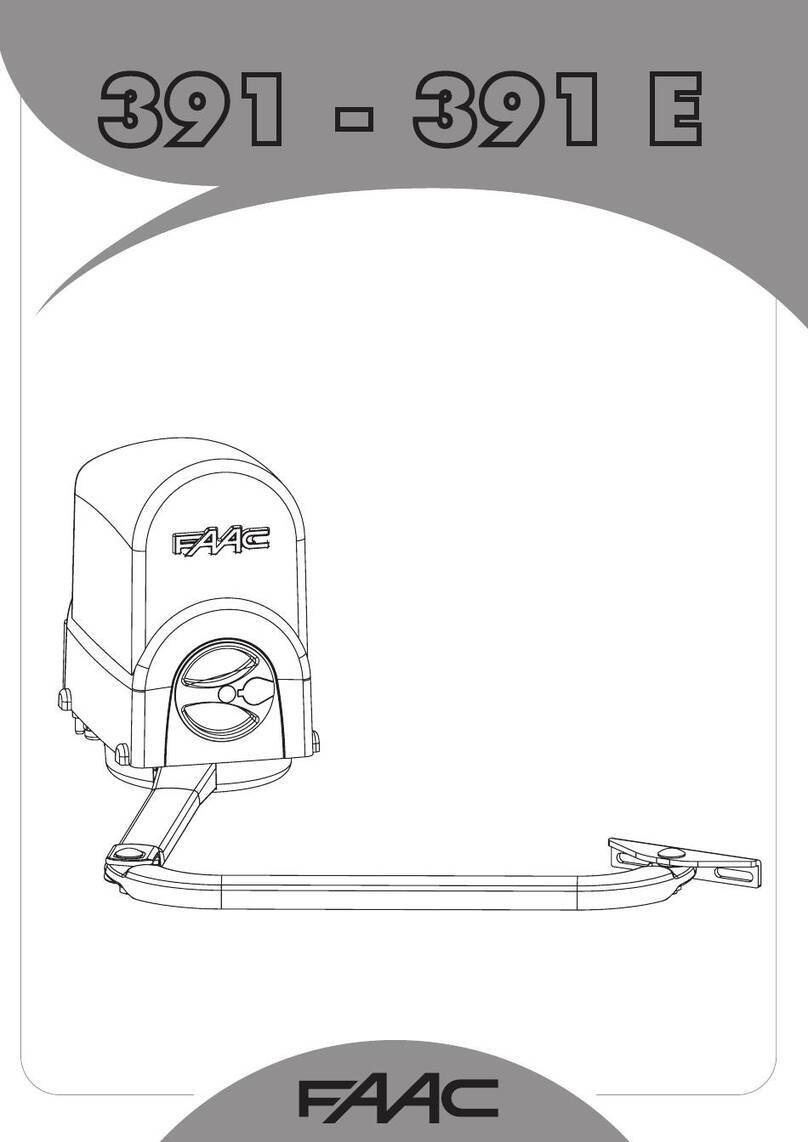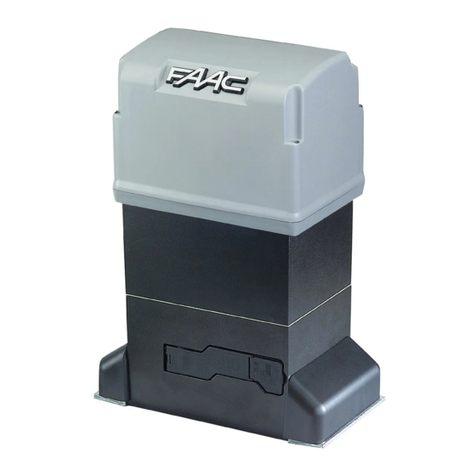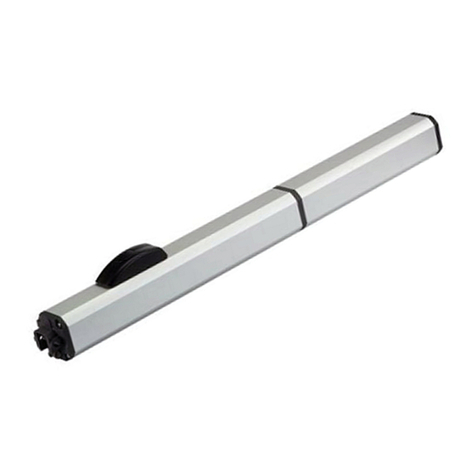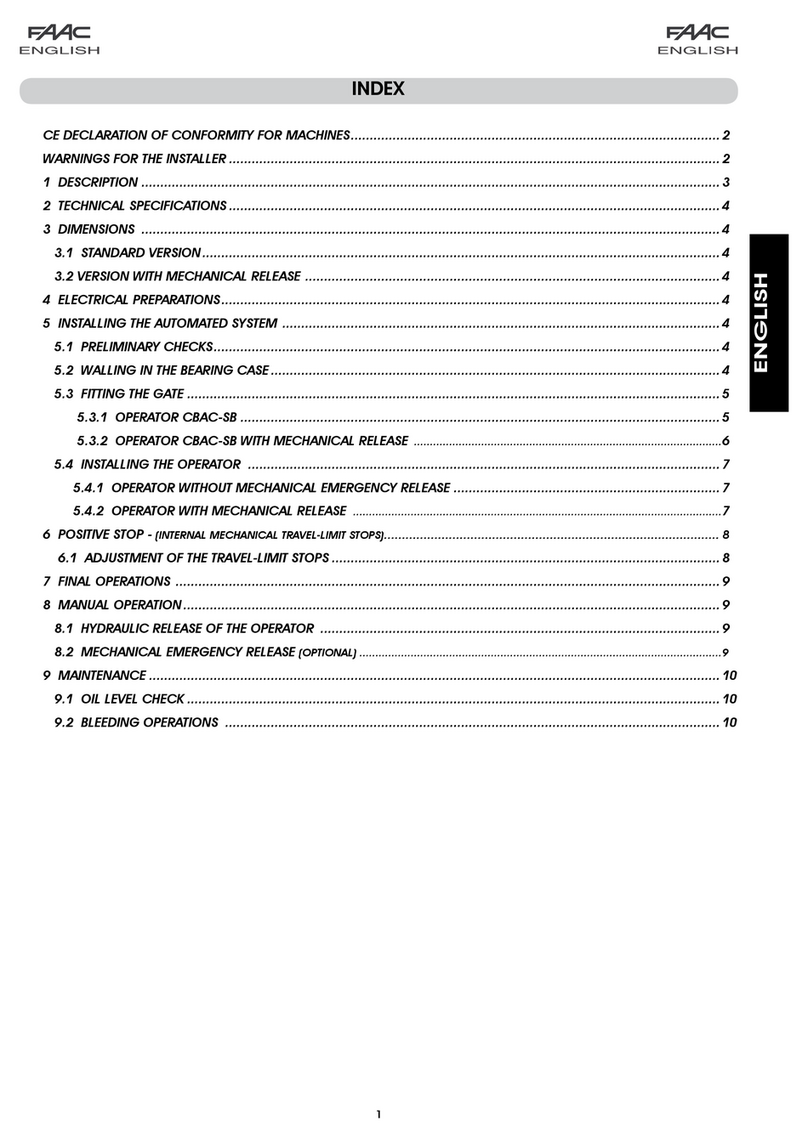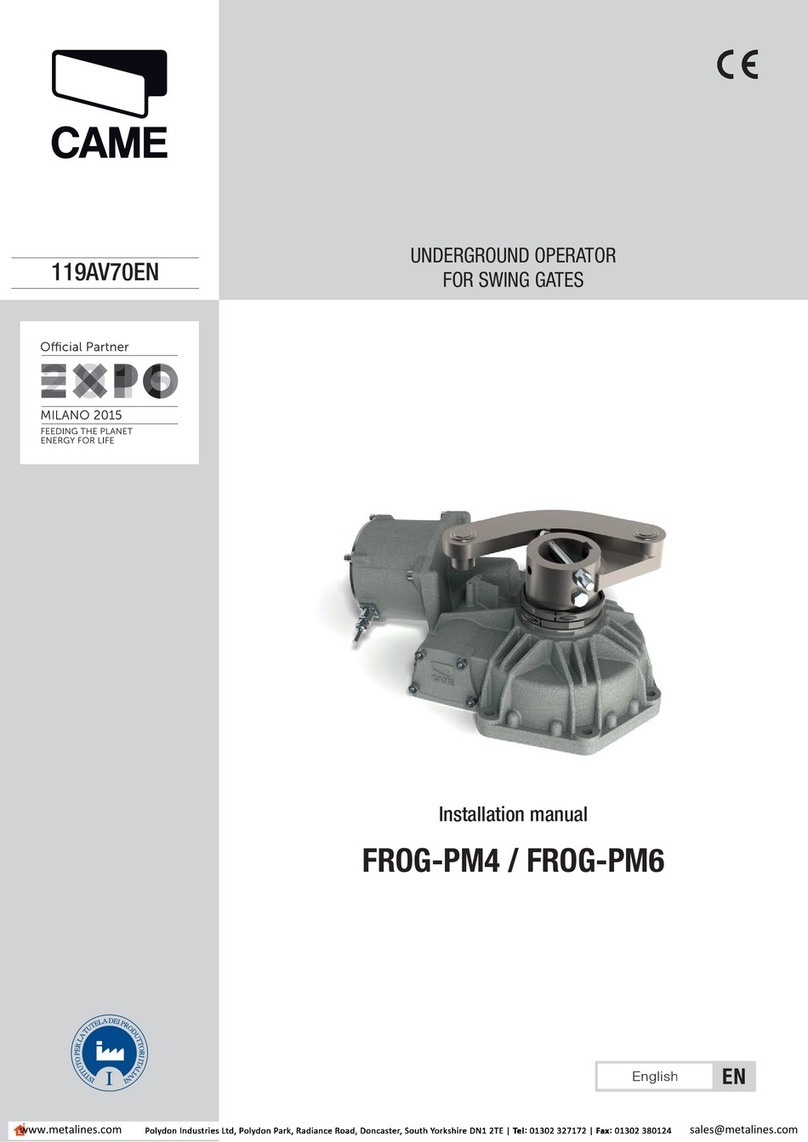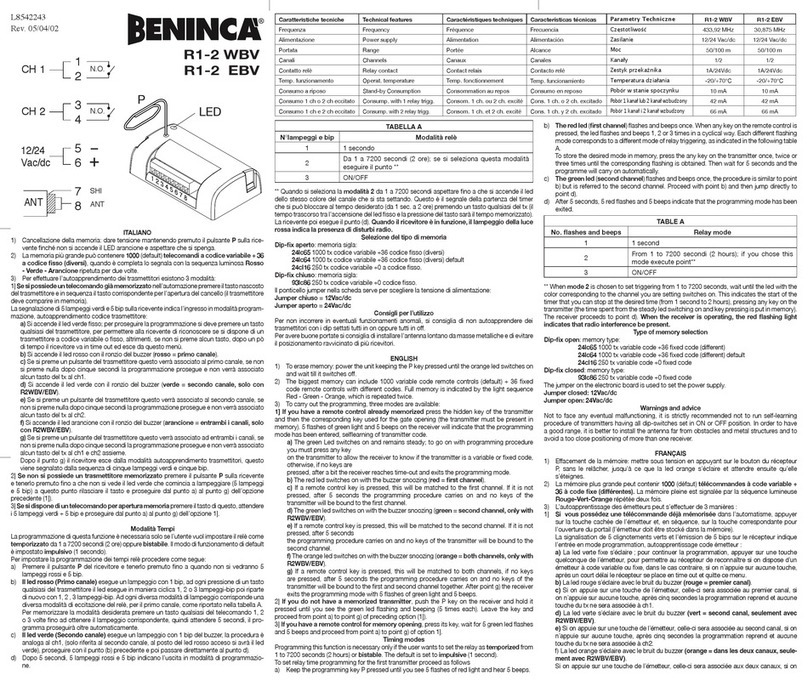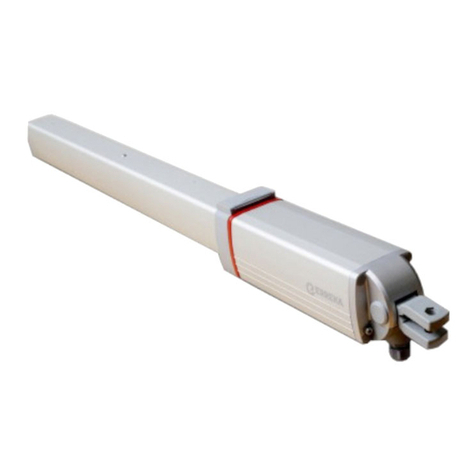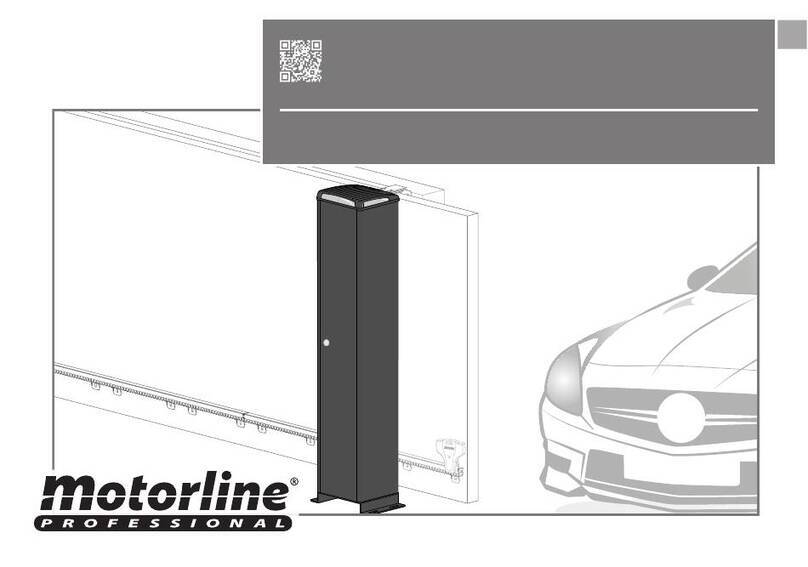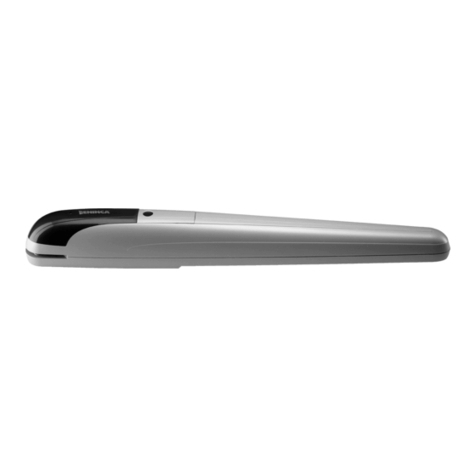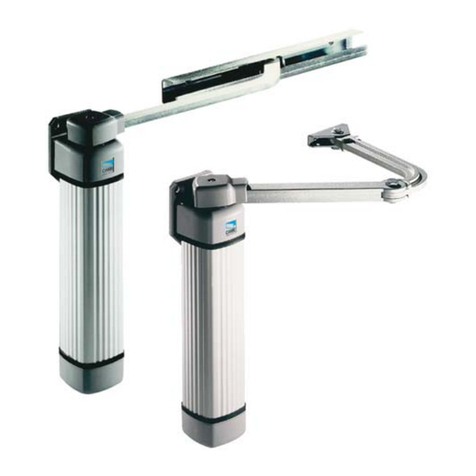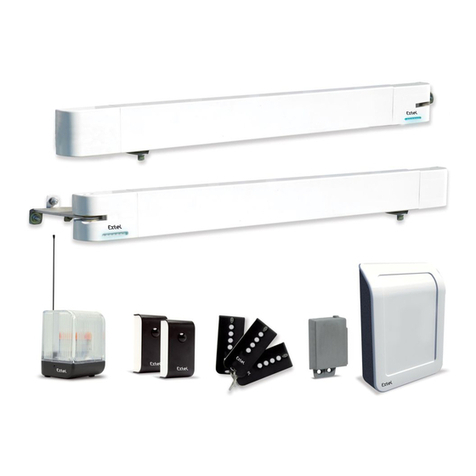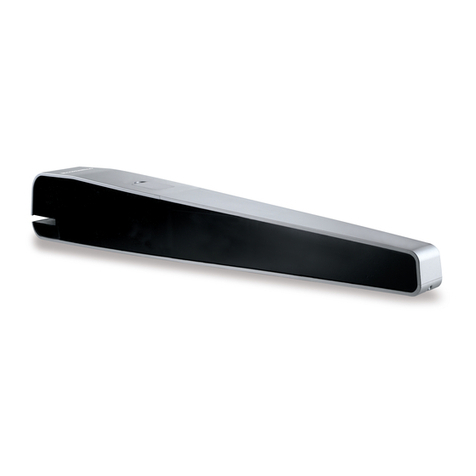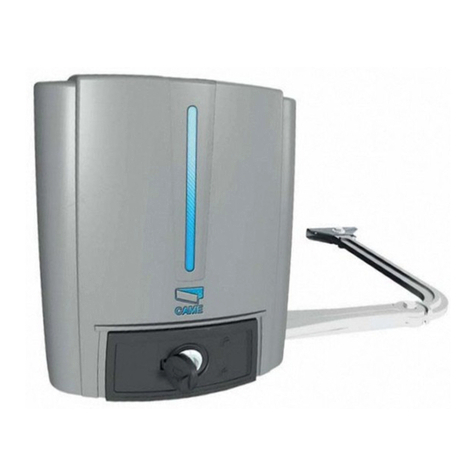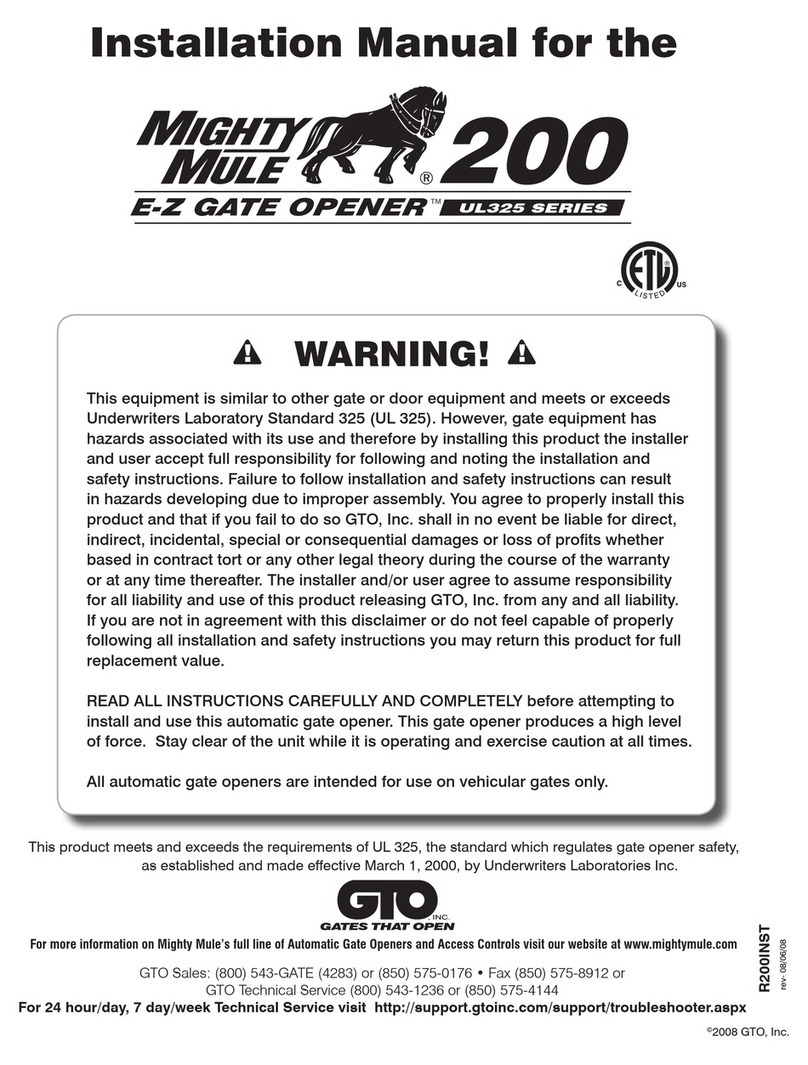THE 415 COMPACT OPERATOR
GENERAL CHARACTERISTICS
The FAAC 415 Compact Operator is an automatic gate
operator for a swinging gate leaf. The 415 Compact
Operator is useful in residential applications and can
accommodate a gate leaf up to 14 ft (4.3 m) long.
The self-contained 415 Compact Operator consists of an
electric motor that drives a worm screw housed in an
aluminum casing.
The locking the 415 Operator provides in the fully
opened and fully closed positions is a service device
rather than a security device. Additional, external locks
are recommended under the following conditions:
∗ It is a solid-faced gate.
∗ The length of the gate leaf is 6 ft (2 m) or longer.
∗ The installation requires tight security.
∗ The site is subject to vandalism.
∗ The site is subject to strong or very gusty wind
In two-operator gate installations, both (master/slave)
operators are wired to one control panel.
The electronic control panel is a microprocessor-based
controller that accepts a wide range of product
accessories and reversing devices, thus allowing for
flexible gate system design.
Also for the protection and proper operation of the 415
Operator, each operator has built in limit switched so
positive stops are not needed.
Built-in security and anti-crushing measures of the 415
Operator include built in reverse on contact and a
torque adjustment that controls the force transmitted to
the gate leaf through the 415 Operator.
The Manual Release mechanism is a key accessed
device that disengages (or engages) the cylinder on 415
Operator. When the drive is disengaged, you can open
and close the gate leaf by hand. Such manual operation
of the gate is necessary during installation and useful
during prolonged power failures.
The torque of the 415 Operator is set during Basic
Programming of the 425 D Control Panel. (see page 19
for Basic Programming).
Reversing devices (such as inductive loops and
photocells) should be installed to provide non-contact
reversing operation.
WARNING: To insure that the installation meets the UL
325 Standards. A set of photo beam (Part Number
785163) must be installed anywhere that an entrapment
with the gate leaf(s) could happen.
The 425 D also has a built in battery back-up system
that can be used with the addition of 2 12V 7.5ah
batteries. The batteries must be wired in series to
provide 24VDC to the control panel during power
outages. Connect the batteries to the +/- on the 425D
control panel (see Fig. 16)
During prolonged power outages the manual release
may be used if needed.
Page 6
October, 2005
415 L LS Operator And
425 D Control Panel Installation Manual
Make sure that the gate structure is solidly built. Add
reinforcing crosspieces if necessary to the gate leaves.
Make sure that the gate moves smoothly on its hinges
without excessive friction by swinging it opened and
closed by hand. If necessary, lubricate all the gate's
moving parts.
Positive stops are not needed with the 415 Operator due
to built in limit switches.
MANUAL RELEASE MECHANISM
To manual release the 415 Operator perform the
following steps as shown in Figure 2.
1. Slide the key access cover toward the front of the
operator.
2. Insert the key and turn it counterclockwise 1/4 turn.
INSTALLATION INSTRUCTIONS
Installing the 415 Operator involves preparing the gate,
installing the operator(s), installing the control panel,
programming control panel, and connecting other
operational controls.
Note: The following installation instructions assume
you are fully capable of installing an electromechanical
operator on a gate. This manual does not instruct you
in designing a gate, installing a gate (whether on
masonry, wood, or metal posts), or basic electrical
wiring. The installation tasks discussed in this manual
are tasks particular to the 415 Operator.
PREPARE THE GATE
Before you install the 415 Operator, you need to prepare
the gate itself for the operator. Be sure to do the
following:
